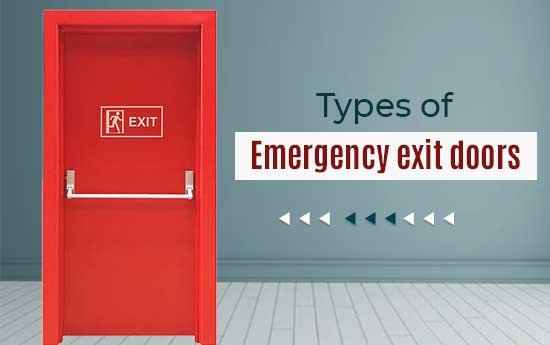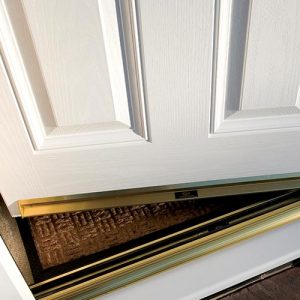Understanding the Different Kinds of Fire Doors for Enhanced Security
From basic fire-rated doors that protect against flames to acoustic fire doors that provide both fire resistance and sound insulation, each type is developed with certain features in mind. The assimilation of glass fire doors and the need of fire leave doors better highlight the complex nature of fire door applications.
Criterion Fire-Rated Doors
Standard fire-rated doors are a critical component in ensuring building safety and security and conformity with fire laws. These doors are especially created to withstand the spread of fire and smoke, giving vital security to residents and residential property. Built from materials such as steel, gypsum, and fireproof wood, they can endure high temperatures and keep architectural stability for varying periods, commonly varying from 20 minutes to 3 hours.
The performance of common fire-rated doors is measured by their fire-resistance rating, which is determined via extensive screening under controlled problems. This score indicates the duration during which the door can contain fires and warm, consequently enabling added time for emptying and emergency feedback. Furthermore, these doors frequently include intumescent seals that broaden when subjected to warm, more avoiding the flow of smoke and hazardous gases.
Installation of typical fire-rated doors have to abide by strict building regulations and requirements, such as those set by the National Fire Security Organization (NFPA) and the International Building Regulations (IBC) Regular examinations and maintenance are important to guarantee that these doors operate properly in an emergency situation. Correctly mounted and maintained fire-rated doors are crucial in enhancing general building security and reducing fire-related dangers.
Smoke Doors
Smoke doors play a critical duty in fire security by particularly attending to the containment of smoke, which is usually extra dangerous than flames during a fire case. Smoke inhalation can cause severe respiratory concerns, disorientation, and also deaths, making smoke doors an essential component in emergency preparation. These doors are designed to restrict the movement of smoke in between different areas within a structure, thereby supplying safer emptying routes and reducing possible damage to building.

In addition, smoke doors are commonly outfitted with automated closing mechanisms, activated by smoke detectors or emergency alarm, to ensure they close without delay during an emergency. By including smoke, these doors help keep reduced temperatures and clearer exposure in retreat courses, making them an indispensable aspect in thorough fire safety and security strategies. Their proper installation and maintenance are vital to make certain optimal efficiency when most needed.
Acoustic Fire Doors
Acoustic fire doors supply a dual feature in both fire security and sound attenuation, making them a beneficial addition to structures where noise control is vital. These doors are engineered to not just fulfill rigorous fire resistance criteria but additionally to considerably minimize sound transmission, thereby improving overall structure efficiency.
The building of acoustic fire doors generally includes a mix of dense products and specialized seals. These aspects collaborate to create a reliable obstacle versus both fire and sound. High-density cores, such as mineral boards or composite products, are commonly utilized in the door fallen leave to take full advantage of sound insulation. In addition, the door structure and seals are made to preserve acoustic stability while providing robust fire resistance.
Acoustic fire doors are particularly advantageous in environments where privacy and peaceful are paramount, such as medical facilities, resorts, and universities. They assist to keep a tranquil ambience by lessening the transmission of sound in between rooms or corridors while ensuring conformity with see fire safety and security regulations. In enhancement to their functional advantages, these doors can be tailored to blend seamlessly with the architectural looks of a structure, guaranteeing that safety does not come at the cost of design.

Glass Fire Doors
Glass fire doors, regularly used in modern building designs, supply a mix of transparency and safety and security that conventional fire doors can not match. These doors combine the aesthetic appeal of glass with important fire-resistant homes, making them an excellent choice for modern structures. Engineered with specialized fireproof glazing, glass fire doors can Related Site withstand high temperature levels and avoid the spread of fires and smoke for a specified period, normally ranging from 30 to 120 minutes.
The construction of glass fire doors entails multiple layers of tempered glass, commonly treated with intumescent materials that broaden when exposed to heat, more enhancing their fireproof capabilities. These doors are not just useful in terms of fire safety and security yet also permit all-natural light to permeate through areas, contributing to power efficiency and an extra welcoming atmosphere.
In addition, glass fire doors can be incorporated with numerous framework materials such as steel or light weight aluminum, which supply extra structural assistance and durability. The usage of such doors is specifically helpful in commercial, instructional, and health care settings where presence and safety and security are critical. By satisfying rigid fire safety and security guidelines and maintaining an open, modern-day aesthetic, glass fire doors represent a pivotal development in fire-resistant building and construction.

Fire Escape Doors
Fire exit doors are a critical element of any type of building's safety and security framework, made to provide a swift and secure ways of egress throughout emergency situations. These doors are purposefully situated to ensure passengers can promptly and safely leave the premises in case of a fire or other harmful scenarios. Unlike basic doors, fire leave doors should comply with stringent regulative criteria, guaranteeing they can execute dependably under discomfort.
An essential function of fire leave doors is their capability to open quickly from the within, normally equipped with panic bars or press pads. This design helps with click to investigate quick discharge and avoids bottlenecks that can occur during high-stress scenarios. Additionally, fire escape doors are commonly constructed from fire-resistant materials to prevent the spread of flames and smoke, thereby offering vital added time for discharge and firefighting initiatives.
An additional vital aspect is the clear signage and lighting linked with fire departure doors. Appropriate signage guarantees that these departures are easily identifiable also in low-visibility conditions. Regular maintenance and inspections are critical to guarantee that these doors function correctly when required. Inevitably, the effectiveness of fire escape doors is a vital element in protecting lives and decreasing property damage throughout emergencies.
Conclusion
In recap, recognizing the numerous kinds of fire doors, including basic fire-rated doors, smoke doors, acoustic fire doors, glass fire doors, and fire escape doors, is crucial for improving security in buildings. Each kind provides certain benefits, from fire and smoke containment to appear insulation and visual assimilation, making certain comprehensive protection. Fire doors. Regular upkeep and compliance with safety standards are critical to assure their performance in protecting residents and promoting risk-free emptying during emergencies